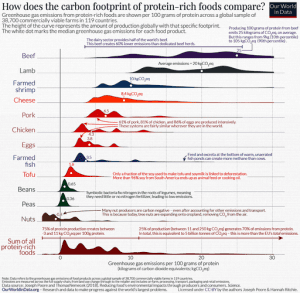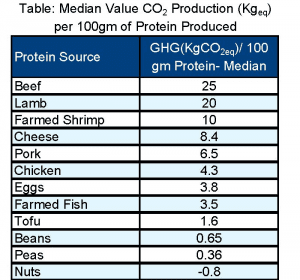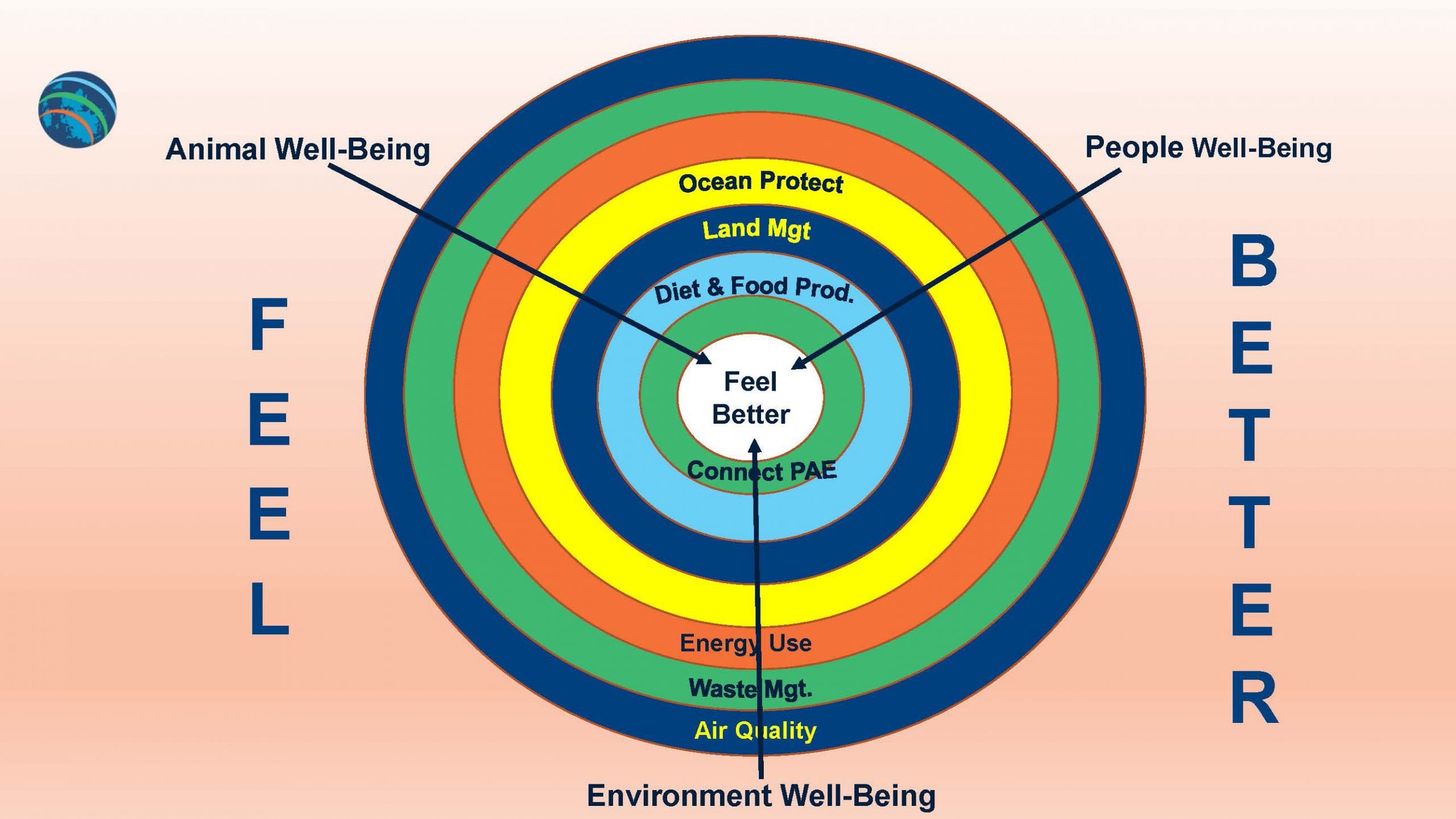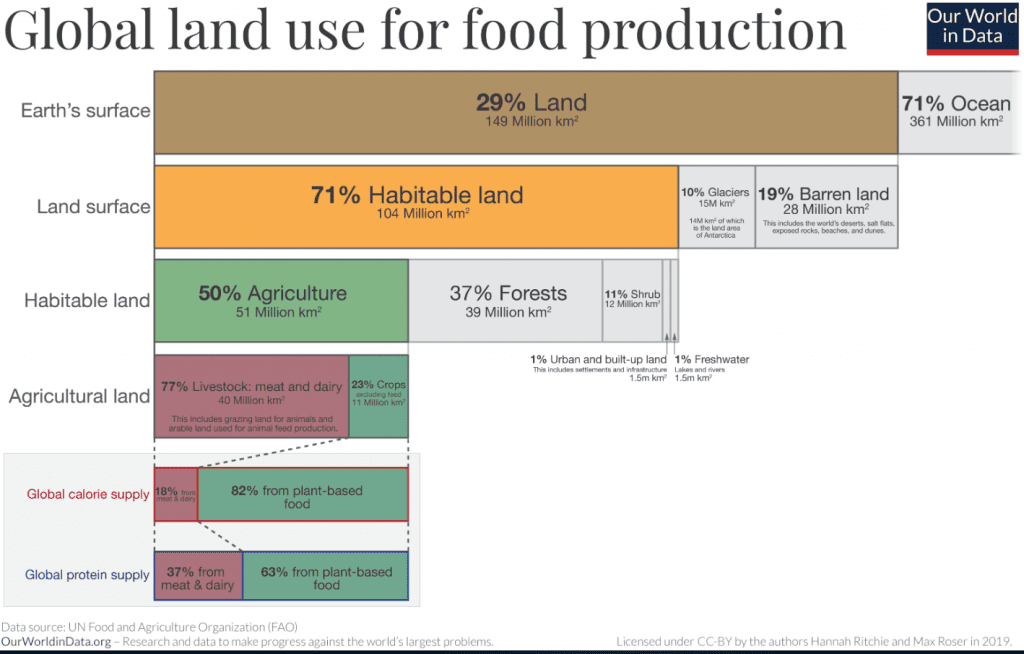Feb 27, 2020 Protein Production and Consumption
For those interested in data and understanding current global challenges but who have not yet visited the website,
Our World in Data, we would strongly urge spending some time browsing the site. This January a new article appeared addressing the very confusing issue of the greenhouse gases produced through different sources of protein production. Conflicting reports have argued that protein sourced from meat and fish either is, or is not, a major source of global greenhouse gas (GHG) emissions, but the article, “Environmental impacts of food production” by Hannah Ritchie and Max Roser published online at Our World in Data, provides some clarity and answers.
The chart accompanying the article is complex and very rich in both data and text. It illustrates a very important point about the GHGs from different protein sources: the amount of GHG per kilogram equivalent of CO2 can vary over a huge range, depending on how the protein source is cultivated or raised. That is why the chart indicating how much GHG is produced per 100 gm of protein produced is so spread out for beef, lamb and farmed shrimp. Farmed fish systems can be managed to produce relatively low amounts of GHG, but management varies widely and poorly run fish farms can produce significant quantities of methane. The data are clearer in the associated table that provides the median GHG footprint for different protein sources.

Chart is from article, “Environmental impacts of food production” by Hannah Ritchie and Max Roser, published online at OurWorldInData.org.

The article argues that switching from animal to plant protein sources will not only have a big impact on one’s dietary carbon footprint but also acknowledges that people can reduce their footprint without cutting out animal protein by being more discriminating in how animal protein is sourced. The article notes that high impact protein production (that with a footprint greater than 11 kgCO2eq) produces just 25% of the protein the world consumes but 70% of the GHG emissions.
The article concludes that “if we want to reduce the emissions from our food, there is massive scope for both consumers and producers. For producers, understanding and adopting best farm and land management practices can mitigate the highest impacts of production.” For consumers, eating more plant-based protein sources such as tofu, nuts, peas and beans will have a significant impact no matter where in the world one lives.
The final chart from the article illustrates global land use. As the chart documents, 77% of agricultural land (40 million SqKm) is devoted to raising and feeding livestock for meat, dairy and eggs, while only 23% is devoted to producing food directly consumed by humans. In terms of the calories we eat and the protein we consume, 18% of calories and 37% of protein come from meat and dairy, even though meat and dairy production accounts for 77% of agricultural land. We need to change our diets, not just to mitigate climate change threats but also to produce our food more efficiently and make more land available for wildlife.






